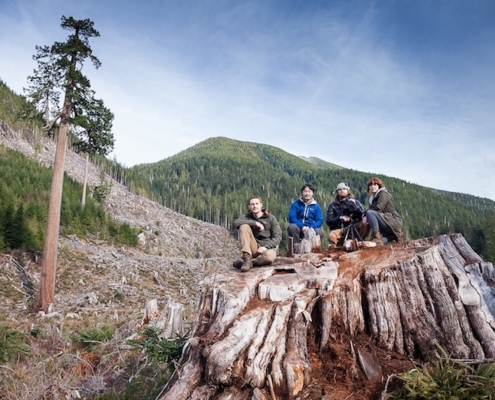
Old-Growth Momentum Grows as Businesses, City Councils, and Naturalists Speak Up & Renowned Filmmaker Comes to Port Renfrew
Interest and concern for the fate of Vancouver Island’s endangered old-growth forests is on the rise, as a renowned filmmaker and his crew arrived earlier this week from the US to do a piece about the old-growth forests around Port Renfrew. In addition, a growing and diverse base of businesses, municipal councils, and natural history associations have joined the chorus of concerned citizens calling on the province to protect the endangered old-growth forest in the Central Walbran Valley on Vancouver Island near Port Renfrew.

Federation of BC Naturalists (BC Nature) join call to protect Central Walbran Valley
Thanks to the Federation of BC Naturalists (BC Nature), who have joined multiple Chambers of Commerce and municipal councils calling for the protection of the endangered Central Walbran Valley. The federation consists of 53 naturalist clubs representing 6000 members in British Columbia, including biologists, ecologists, and various natural history enthusiasts. The federation has sent a letter of support for the Cowichan Valley Naturalists in their call to the province requesting protection of the Central Walbran Ancient Forest. The 500 hectare Central Walbran Valley is threatened with potential logging by Teal-Jones, and is the most intact part of a 2600 hectare Special Management Zone. The Ancient Forest Alliance is working with diverse partners calling for the region's protection, along with legislation to protect endangered old-growth forests across BC and new policies to ensure a sustainable, value-added second-growth forest industry.
See the Federation of BC Naturalists (BC Nature) online at: www.bcnature.ca
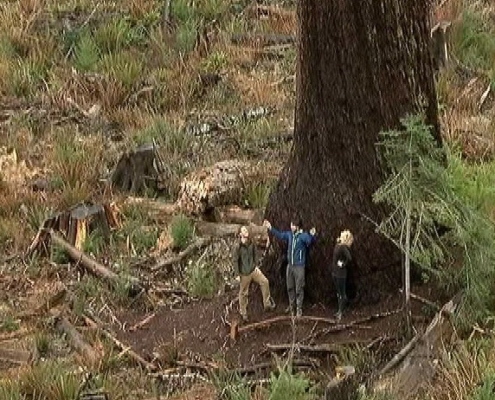
Tall trees turning Port Renfrew into tourist hot spot
Here's a new piece by CHEK TV's April Lawrence about how old-growth forest tourism at the Avatar Grove, Big Lonely Doug, and other nearby ancient stands has transformed the previously ailing economy of Port Renfrew. Dan Hager, the local Chamber of Commerce president speaks up for a Tall Tree tourism economy, while the AFA's Ken Wu and TJ Watt speak about the importance of saving the remaining old-growth forests (the AFA is working to protect places like the Central Walbran and Lower Edinburgh Grove Ancient Forests - plus supporting a sustainable, value-added second-growth forest industry).
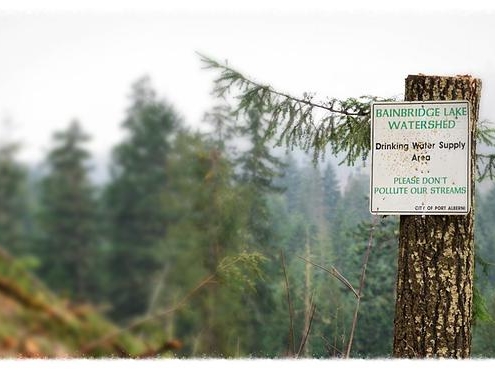
Port Alberni, Vancouver Island’s Forestry Capital – Sustainability Champion?
Here's a new article by the Ancient Forest Alliance's Ken Wu about how Port Alberni, the forestry capital of Vancouver Island and once considered unfriendly to the environmental movement, has today become a major hub of environmental awareness over logging in their drinking watershed, the loss of their last old-growth stands at McLaughlin Ridge and other sites, and over the massive export of raw logs to the USA and China from their region. Thanks to Jane Morden and her team with the Port Alberni Watershed-Forest Alliance for moving these issues into the forefront over years of hard work!
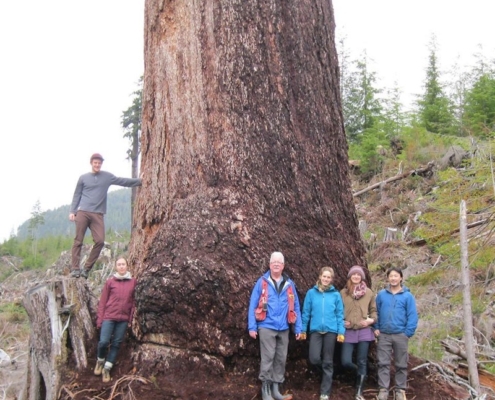
Metchosin supports stopping old-growth logging
Great News!! Metchosin council passes resolution calling on the BC government to protect the remaining old-growth forests of Vancouver Island! Thanks to councillor and renowned forest ecologist Dr. Andy Mackinnon and the Metchosin councillors Moralea Milne, Kyara Kahakauwila, Bob Gramigma, and Mayor John Ranns for passing the resolution!
Goldstream Gazette:
While it's not quite a New Years resolution, Metchosin resolved to prevent any more logging of old-growth forest on provincial Crown Land on Vancouver Island.
The resolution will see a letter go to the Association of Vancouver Island Coastal Communities, seeking its support for a request to amend the Vancouver Island Land Use Plan to protect all remaining old-growth forest.
"The amount of old growth remaining on southern Vancouver Island is a small fraction of what it used to be, and old growth has all sorts of value – economic, social and environmental value," said Metchosin Coun. Andy MacKinnon. "We thought it was timely to create a resolution to save the remaining old growth for ourselves and future generations."
The longtime forester and biologist said such trees at Avatar Grove, and Big Lonely Doug – left standing in the middle of a clearcut, it's considered the second-largest Douglas fir tree in Canada – attract visitors to the area. He pointed to an estimate showing that only 13 per cent of old-growth forest on southern Vancouver Island remain.
"These are some of the largest trees on the planet, some of the largest living organisms that have ever existed on earth," MacKinnon said. "And some people visit to view these stands, so there is an important economic resource even if you don't log
them"
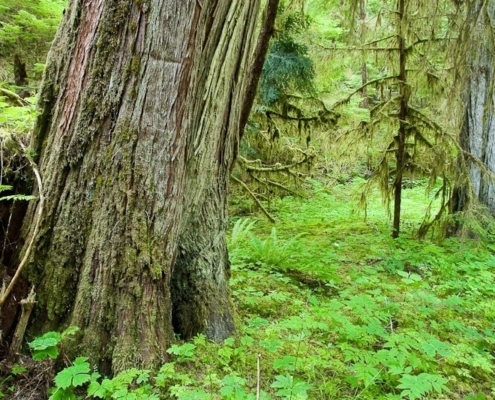
THANK YOU to our 2015 Business, Artist & Organization Supporters!
THANK YOU to all local and sustainable businesses, artists and organizations that have supported the AFA through fundraisers or direct donations in 2015! For an overview of these supporters and the many creative and generous ways that they have bolstered the AFA's work this past year, see here.
Find out more about supporting the AFA as a business or organization at our Business & Organization Support page.
See our FULL LIST of businesses, artists and organizations that have supported the AFA since 2010!

Most of B.C.’s Great Bear Rainforest protected
Great news - Huge strides in getting the northern rainforest of BC protected! Now to get the southern rainforest on Vancouver Island and the SW Mainland protected, and in the rest of BC, where protection levels are far, far behind! Global TV:
An agreement has been reached to protect 85 per cent British Columbia’s Great Bear Rainforest from logging, ending a decades-long battle to safeguard the central coast rainforest.
The deal signed between First Nations, environmental groups and the British Columbia government covers 3.1-million hectares in protection, an area that is the size of Nova Scotia.
Jens Weiting of the Sierra Club said logging in the remaining part of the forest will be tightly controlled.
“It’s a globally outstanding region, also, in terms of its size. It is 6.4-million hectares. It is larger than many European nations. It is larger than the Netherlands or Belgium or Switzerland and it is really a global responsibility to find solutions to protect the ecological integrity and support communities in this region.”
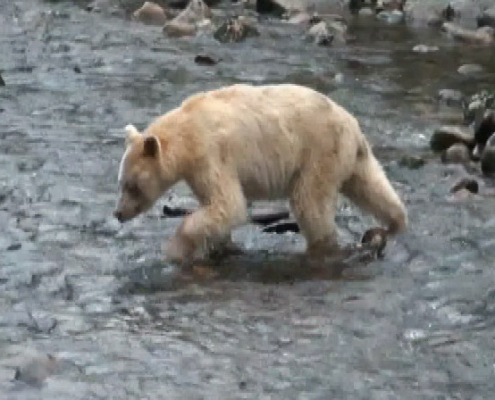
Hope on Vancouver Island following historic Great Bear Rainforest agreement
After years of protests, boycotts, and negotiations, the Sierra Club of BC, ForestEthics, and Greenpeace, working to protect the northern rainforest of BC (the Great Bear Rainforest) have now succeeded in getting 85% of the forests there off-limits to logging through legislation (conservancies and parks) and regulatory protections (forest reserves, ecosystem-based management).
Now it's time to get the southern rainforest (ie. Vancouver Island and the SW Mainland coast), where only 8% of the productive forests are protected in parks and Old-Growth Management Areas/ Wildlife Habitat Areas/ Ungulate Winter Ranges (forest reserves), protected with modern, science-based, expanded protections.
Here's a CHEK TV piece where the AFA's Ken Wu talks about the endangered Central Walbran Valley and Vancouver Island.
Avatar Grove Ecotourism
Here's a new piece by Shaw TV about the importance of old-growth forests of Port Renfrew for the tourism economy, focused on the Avatar Grove and the Walbran Valley, and featuring Dan Hager, president of the local Chamber of Commerce, and the AFA's Ken Wu and TJ Watt.
